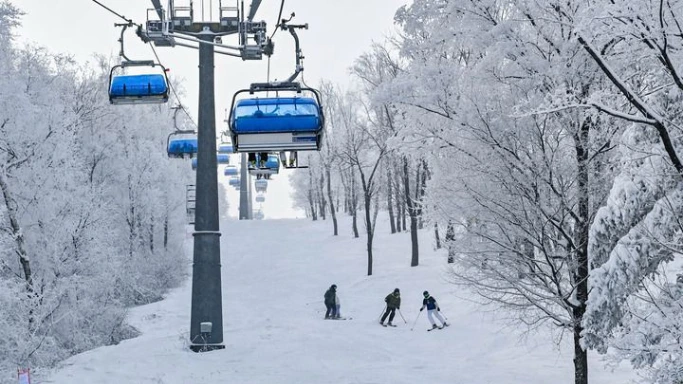
Winter Sports Illuminate China’s Struggling Region
Changchun (Xinhua): The growing global popularity of the Asian Winter Games and the Harbin Ice and Snow World has once again shifted attention toward China’s northeastern region. Once an industrial hub facing economic struggles, this area has recently embraced the “ice and snow economy,” leading to accelerated industrial revitalization.
A Professor’s Perspective on Economic Transformation
Professor Syed Hasnat, who has been teaching at Jilin University for 14 years, has witnessed this transformation firsthand. From vibrant lecture halls to snow-covered mountains, he has observed how China’s northeast is harnessing its winter resources to drive growth. According to him, this economic shift not only benefits China but also offers valuable lessons for other developing nations.
As an economics professor, Hasnat not only discusses China’s economic achievements with his students but also explains the underlying economic principles behind the region’s revival. He notes that the rise of winter tourism has turned the once-desolate winter season into a bustling period of activity. Skiing, once considered a luxury sport, has now become a common pastime for many. In Changchun’s Lianhua Mountain Ski Resort, for example, parking spots are scarce on weekends as families flock to enjoy winter sports.
Winter Tourism: A New Economic Engine
During the 2023-2024 winter season, Jilin Province welcomed 125 million domestic tourists, generating over 240 billion yuan in tourism revenue. These figures confirm that the winter economy is becoming a major driver of the region’s resurgence.
The impact extends beyond ski slopes. Hasnat highlights how the winter sports industry is reshaping the entire industrial landscape—ranging from sports infrastructure and service industries to the training of professionals and manufacturing of winter sports equipment.
Harbin’s Success and Future Prospects
The successful hosting of the 2025 Harbin Asian Winter Games has further strengthened Hasnat’s belief in the region’s potential. He notes that these events are connecting major cities in China’s northeast, fostering regional collaboration, and creating industry clusters. He believes this development model holds valuable insights for Pakistan.
Reflecting on China’s transformation, Hasnat ponders how this “Chinese experience” could be applied to other regions, including those near the Himalayas.
A Lesson for Pakistan’s Winter Tourism
Hasnat contrasts China’s progress with Pakistan’s underdeveloped winter tourism sector. He points out that regions like Gilgit-Baltistan and Swat’s Kalam Valley are rich in snow-covered landscapes but suffer from inadequate infrastructure, such as hotels and roads.
He suggests that Pakistan can learn from China’s northeast by investing in ski resorts and improving tourism services. He also expresses hope for increased collaboration between Chinese and Pakistani businesses to develop joint winter tourism projects.
The Symbolism of Snow and Future Cooperation
As night falls in Changchun’s Ice and Snow World, glowing ice lanterns illuminate the landscape. Standing before an ice castle, Hasnat recalls his first winter in Changchun 13 years ago, when he struggled with the severe cold. Now, he sees winter as a season of opportunity and renewal.
Hasnat reflects, “Snow is transparent. It falls in China’s northeast and along Pakistan’s Karakoram range. Perhaps, as it melts into spring streams, it will symbolize the flourishing cooperation between our nations.”
Published in The Gwadar Post, 03 March 2025.








